Chamaedorea Willd.
parlor palm, neanthe bella, good-luck palm, collinia
Arecaceae
Mexico, Guatemala, and Belize
Chamaedorea elegans Mart. is frequently offered as a terrarium or aquarium plant; it is one of the most widely used house plants
none
not weedy
terrestrialterrestrial:
(adj) growing on land as opposed to living in water
palm tree, tolerant of short periods submergedsubmerged:
(adj) (syn. submersed) under water; submerged below the water surface
Evergreen tree. Stem erect, slender, compact to elongate, densely ringed with leaf scars. Petiolepetiole:
(n) the stalk of a leaf
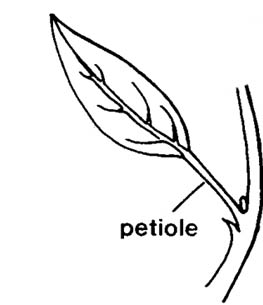 slender, grooved and green above, rounded and pale below; sheath long, apexapex:
slender, grooved and green above, rounded and pale below; sheath long, apexapex:
(n) the point farthest from the point of attachment; the tip (often pointed)
with short liguleligule:
(n) (1) a strap-shaped structure; (2) an often thin, membranous or hairy structure projecting from the top of the leaf sheath in grasses and a few other families; (3) the flattened part of the ray corolla in the Asteraceae
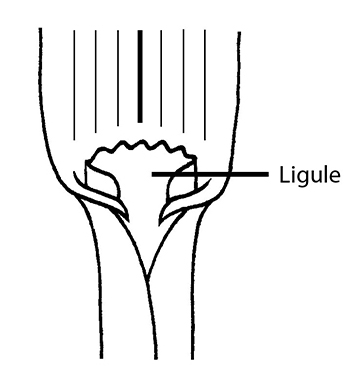 on either side of petiolepetiole:
on either side of petiolepetiole:
(n) the stalk of a leaf
 . Leaves compoundcompound:
. Leaves compoundcompound:
(adj) with two or more like parts, as in a compound leaf; divided into two or more subsidiary parts or orders, as in a compound inflorescence
(paripinnateparipinnate:
(n) a pinnate leaf in which all leaflets are paired and the terminal leaflet is absent
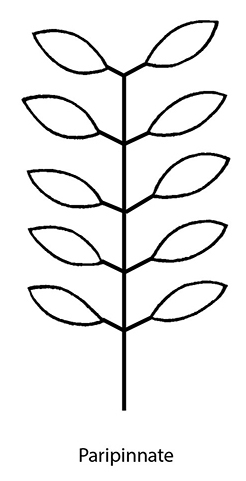 ), congested at apexapex:
), congested at apexapex:
(n) the point farthest from the point of attachment; the tip (often pointed)
, appearing basalbasal:
(adj) at or pertaining to the base, or point of attachment
when small/young; leaf bladeblade:
(n) (syn. lamina) the flat, expanded part of a leaf, frond, or petal (excluding, e.g., the petiole)
 overall oblongoblong:
overall oblongoblong:
(adj) two to four times longer than wide, with +/- parallel sides
 to ovateovate:
to ovateovate:
(adj) egg-shaped in outline; generally with the broad end at or near the base
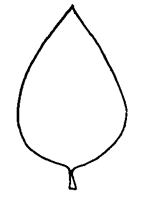 , apexapex:
, apexapex:
(n) the point farthest from the point of attachment; the tip (often pointed)
round to notched, base ± round; pinnaepinna:
(n) one of the primary divisions or leaflets in a compound leaf or frond
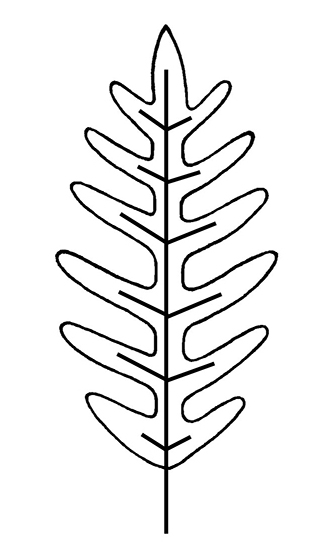 11-21 on each side of rachisrachis:
11-21 on each side of rachisrachis:
(n) the main axis of, e.g., a compound leaf or an inflorescence
, linear to lanceolatelanceolate:
(adj) lance-shaped; widest point below the middle, tapering to the apex
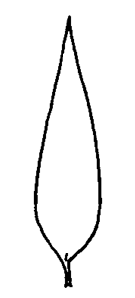 ; venationvenation:
; venationvenation:
(n) the arrangement of veins in a leaf
parallel, midribmidrib:
(n) the main or central vein, line or rib in a leaf or perianth segment
 prominent, pale. Inflorescenceinflorescence:
prominent, pale. Inflorescenceinflorescence:
(n) the arrangement of flowers on the floral axis
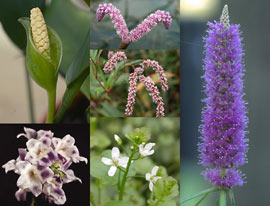 axillary, a paniclepanicle:
axillary, a paniclepanicle:
(n) an indeterminate, branched (often much-branched) inflorescence; the ultimate units may be of a different inflorescence type
 , erect, simple or many-branched; peduncles green in flower, red-orange in fruit; flowers when plant is very small.
, erect, simple or many-branched; peduncles green in flower, red-orange in fruit; flowers when plant is very small.
moist or wet, dense forest, often on limestone
A genus of about 100 species. Chamaedorea elegans is often offered as an aquarium plant as it tolerates short periods submergedsubmerged:
(adj) (syn. submersed) under water; submerged below the water surface
, though it is not an aquatic plant. C. elegans is a very slow growing plant in an aquatic setting.